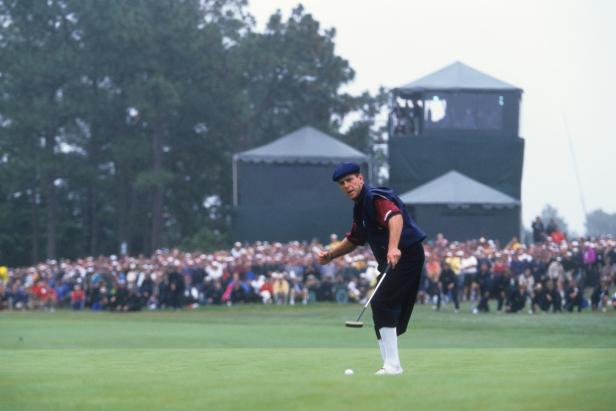Golf
A major win is a small putter company’s big break

Twenty-five years ago, the SeeMore putter company was founded and got the break all small putter companies live for: a major championship win. That occurred just a few months into its existence when Payne Stewart used the company’s original Bronze FGP putter with the company’s hallmark RifleScope alignment technology for his iconic 15-foot par putt at the last to take the 1999 U.S. Open at Pinehurst No. 2. The win and television coverage launched the company into legitimacy with more than 50,000 orders in the weeks after Stewart’s win.
Of course, not all small putter companies enjoy such a break. But for those who do, a major championship win is often the afterburner they need to be propelled into success. For while small putter companies are the David’s amid golf’s Goliaths there are plenty of examples to offer hope.
Take Bobby Grace. At the time of Nick Price’s 1992 Open Championship win with Bobby Grace’s odd-looking Fat Lady Swings mallet, Grace was making putterheads in his St. Petersburg, Fla., garage, producing a handful at a time. And after Price’s victory?
“I had 25,000 orders the next day,” said Grace. “I went from a Toyota to a Lexus overnight.” Grace would later add another major with Na Yeon Choi using a prototype Bobby Grace NYC putter to win the 2012 U.S. Women’s Open.
To take advantage of the rare opportunity when a small putter company gets a tour win, a few things need to fall in place. First, the putter must be visually noticeable, either in shape (as with the SeeMore putter Stewart gamed as well as the Grace putters Price and Choi used) or in markings (the Never Compromise name on the back of Jean Van de Velde’s putter in the 1999 Open Championship was clearly visible to viewers and was shown so often it didn’t matter the Frenchman imploded on the last hole).
“It has to have features that can readily be seen and distinguish it from any other,” Grace told Golf Digest a decade ago. “Bernhard Langer and Jose Maria Olazabal used Scotty Cameron putters to win majors well before Cameron was a household name. Those putters were subtly marked and were hardly noticed. The red dots Cameron has now in the back cavity would have served him well in those days.”
The company also must be ready to capitalize on its opportunity. “We were shipping 600 putters a day in the 30 days after Price won the Open Championship in 1992 with the Fat Lady Swings,” notes Grace. The opposite example is Dandy. Although Vijay Singh won the 2000 Masters using the odd-looking (and curiosity piquing) putter and the orders starting coming in, the company simply couldn’t meet demand.
Each year when we produce the Golf Digest Hot List, some small putter inevitably companies receive a nod. Some have found, like Dandy, they couldn’t keep up with the demand generated from the honor. Others, such as Bettinardi which first appeared on the Hot List in 2010, have gone on to become a successful mainstream company with 32 Hot List medals since.
Such success is not easily gained, especially when it comes to getting putters in play on tour. On any given week four companies—Odyssey, Titleist, Ping, TaylorMade—account for approximately 85 percent of the putters in play on the PGA Tour, leaving scant opportunities for upstart or long-standing smaller companies to get their flat sticks in play. This is a far cry from two-plus decades ago when, according to the Darrell Survey 2002 Equipment Almanac, putters from Kevin Burns were the fourth-most-used putter on the PGA Tour.
Still, despite the hurdles, the number of major wins allow small companies the luxury of thinking they have a puncher’s chance in the world of equipment heavyweights. Rich Beem captured the 2002 PGA Championship with an STX model. Zach Johnson won two majors using a SeeMore putter similar to Stewart’s. Yes! Golf became a popular putter both on tour and in pro shops after Retief Goosen used a C-Groove putter to win the 2001 and 2004 U.S. Opens.
Meanwhile no one can forget Jack Nicklaus’ win in the 1986 Masters using a MacGregor Response ZT 615 putter, one of the biggest beasts of its day on the greens. Easily noticeable for its size, the Golden Bear’s triumph piqued enough curiosity to where a company forecast of 6,000 putters turned into sales of 350,000 units by the end of the 1987.
Although the company had a difficult time figuring out how to meet that demand, that’s a better problem to have than having little to no demand at all.


)






